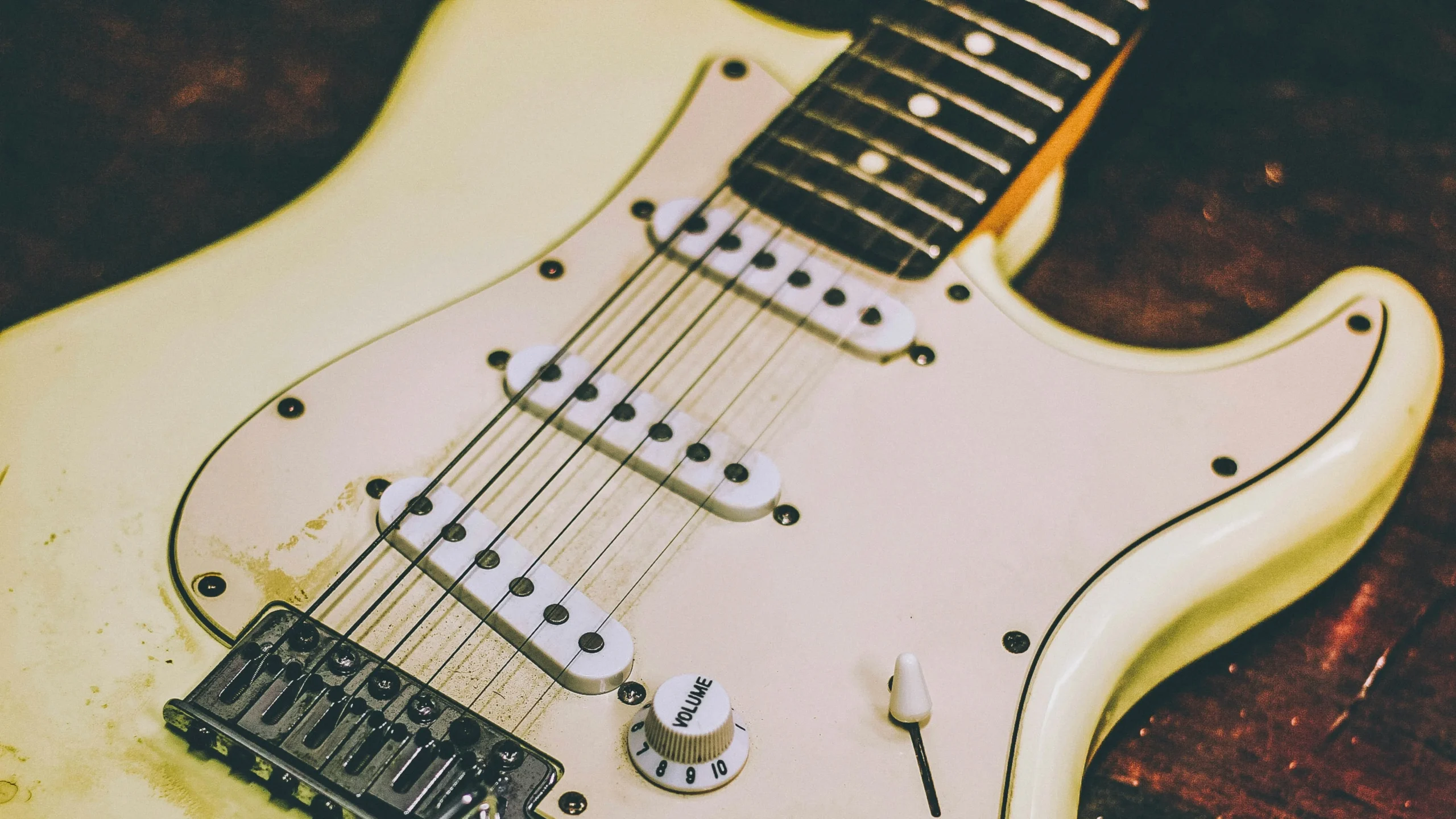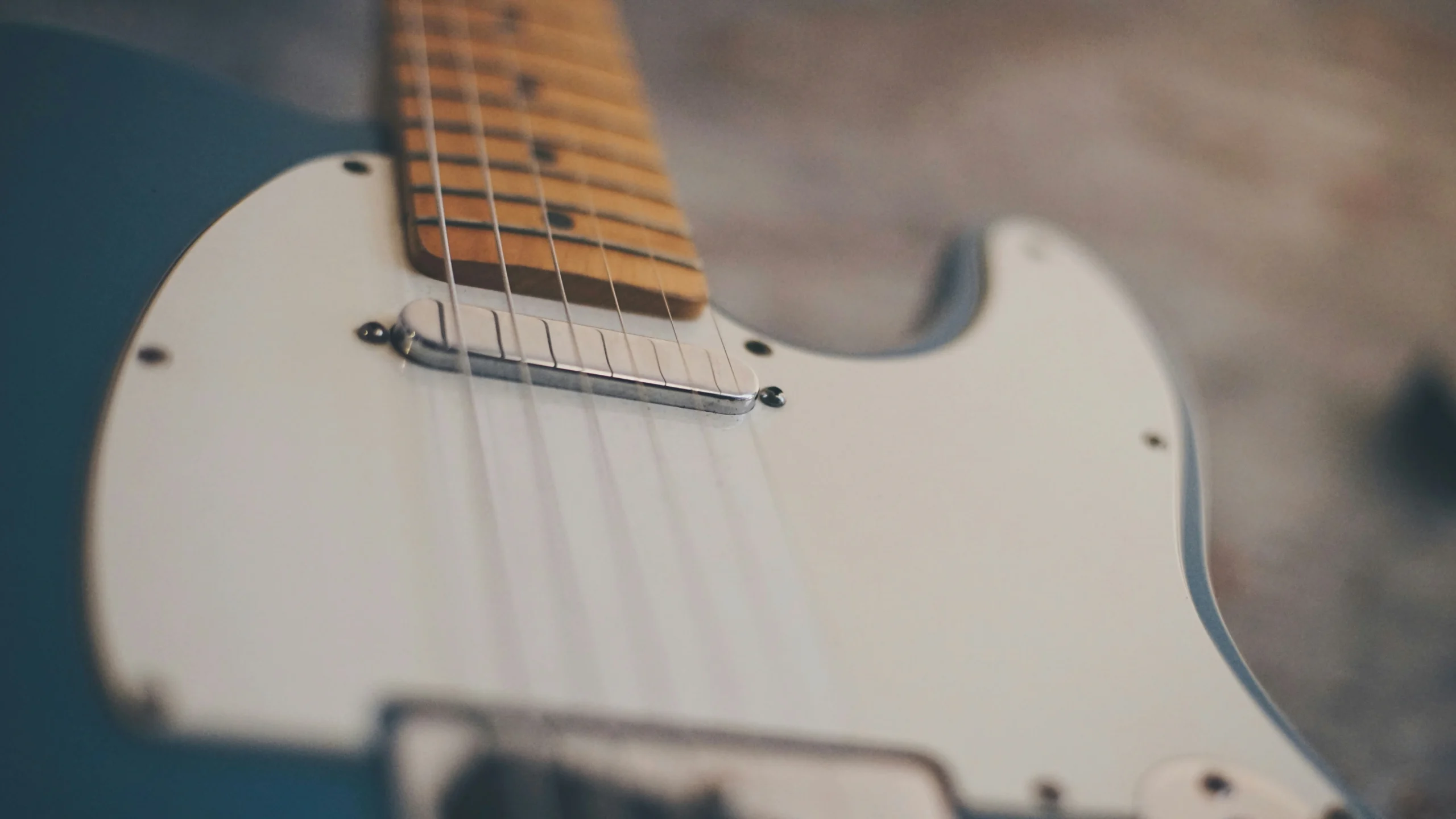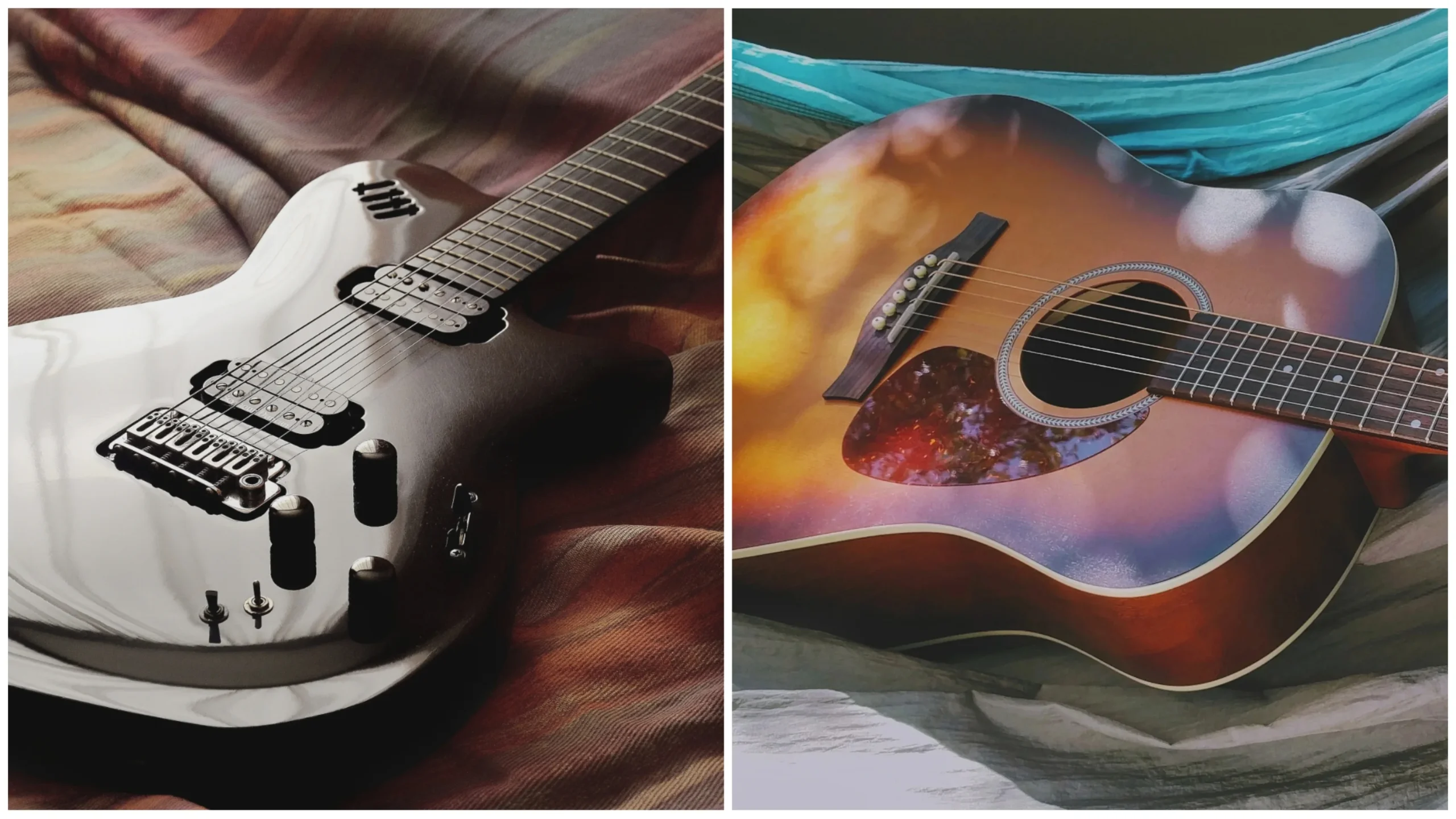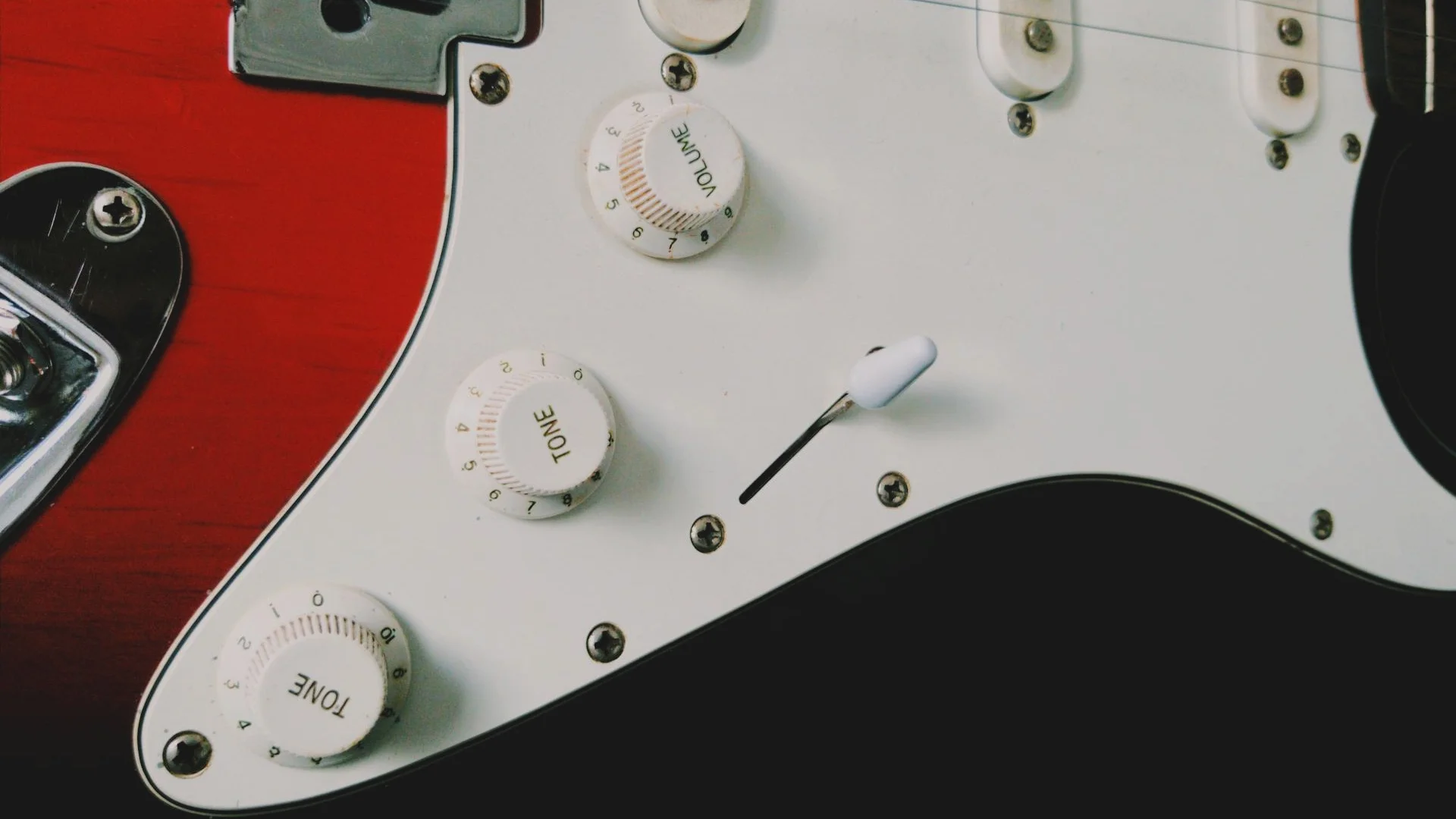
How Many Strings Are On An Electric Guitar?
Electric guitars are a staple in the music world, but have you ever wondered how many strings they have?
In this blog post, we’ll delve into the anatomy of an electric guitar and answer the burning question: how many strings are on an electric guitar?
Whether you’re a beginner guitarist curious about the instrument or simply looking to expand your musical knowledge, understanding the basics of an electric guitar is crucial.
So sit back, grab your favorite guitar pick, and explore the fascinating world of electric guitars together.
Table of Contents
What Are Guitar Strings Made From?
Guitar strings are typically made from various materials, each offering unique characteristics that affect the sound and playability of the instrument.
The most common materials used for guitar strings are steel, nickel, bronze, and nylon.
Steel strings are famous for acoustic and electric guitars due to their bright tone and durability.
Nickel strings offer a warmer sound and are often used in electric guitars.
Bronze strings are commonly found on acoustic guitars, providing a balanced tone with rich harmonics.
Nylon strings are used mainly on classical and flamenco guitars, offering a softer tone and gentle feel under the fingers.
The choice of string material can significantly impact a guitar’s overall sound and feel, making it essential for players to select strings that align with their playing style and musical preferences.
Type Of Electric Guitar Strings
Since they contain magnetic iron, ferrous alloys are used for both the core and wrap wire and the plain steel strings on electric guitars.
String alloys commonly include nickel-plated steel and high and low-carbon steels.
Pure nickel is sometimes used but produces less power, sounds warmer, and has a lower overall volume.
Nickel
Nickel-plated steel is most commonly considered to be the norm. Most famous electric strings are nickel-plated steel, but not all are alike.
The guitar sounds great on warm and bright sounds, and these strings set it apart from other instruments.
Like jazz players, try pure nickel strings (unplated) if you want a warmer sound. Like old records, nickel strings sound soft and round without being too harsh.
Steel
If you want a powerful sound, you should use pure steel strings. Pure steel has a bright tone, a lot of sustain, and high notes.
Furthermore, pure steel strings don’t rust and last the longest. Check out this string if you play metal or rock!
Some electric guitar strings are made from metals such as cobalt, titanium, and copper, but they are complicated to find and expensive, and only some guitar players use them.
Other Alloys
Electric guitar strings aren’t all made of steel and nickel. At Sweetwater, you can experiment with more than a dozen different metals.
Everyone knows films such as Cobalt, zinc-plated steel, and Superalloy. Your tracks can stand out when you use different sets of strings.
How Many Strings Are On An Electric Guitar?
Standard Electric Guitar
An electric guitar is another common form of guitar. It is usually composed of steel and has six strings, which are normally tuned EADGBE to play scales and shape chords.
Extended Electric Guitar
There are some electric guitars without six strings. To make “extended range guitars,” many strings are often added.
7 String Electric Guitar
The seven-string guitar is one of the most popular types among metal musicians, after the six-string guitar.
Based on our knowledge, the following guide will help you find the right seven-string guitar.
A seven-string guitar usually has a thicker string for the seventh. Low B. Metal bands need that extra bass to shake a room with their heavy, rumbling power chords.
If you like metal and big rock music, you should buy a 7-string guitar. Although Robert Johnson used one during his live shows, it could be more useful in pop or blues music.
8 String Electric Guitar
A metal band often uses an eight-string guitar because of its deeper notes, similar to a seven-string guitar.
These tuned F#BEADGBE guitars might sound strange to people used to six- or seven-string guitars since open strings usually do not sound sharp or flat.
Eight-string guitars also offer a more comprehensive range of tones than extended-range guitars.
Because they allow you to play in more styles and ranges, they are often used in heavy metal, progressive rock, and jazz fusion music.
Jazz musicians, especially those who can simultaneously play comp chords, run solos, and walk bass lines, use these guitars for this reason.
9 String Electric Guitar
The guitar has six strings, plus three low strings below the low E string: C#, F#, and B. Metal and experimental songs sometimes use it instead of the 7-string and 8-string guitars.
It makes low, clanking sounds more like drums than clear tones, which makes it popular among metal fans.
12 String Electric Guitar
This instrument has 12 strings, including six double strings that can be tuned in octaves. The strings are often set to different octaves, though they are tuned to the same note.
This set has five notes: E, A, D, G, B, and E. Four notes are in this second set: E, A, D, and G. Strings B and E are tuned to the same pitch.
It sounds like many guitarists are playing simultaneously, but it’s just one artist making a full, ringing song.
Playing a 12-string guitar should be relatively easy if you already know how to play a regular guitar.

How To Choose An Electric Guitar String?
When choosing guitar strings, you should consider a few factors that will modify the sound and feel of your guitar.
The type of tool you use is also essential. There are different strings for an electric guitar.
Strings may also need to be thicker if you want to use different tunings that require thick strings to sound good.
When choosing strings, it is essential to consider the thickness, material, type, coating, and amount of guitar strings.
Guitar String Gauge
A guitar string’s gauge refers to its material thickness. The thickness of guitar strings is usually measured in thousandths of an inch.
Strings on electric guitars are typically 0.009″ thick. String thickness increases, reaching a low value of 0.052″.
The tone you desire depends on your playing style. Electric guitar strings that are thinner sound brighter and are easier to bend. When played or tuned, thinner strings break more easily.
The guitar neck is strained as thicker strings require more tension to reach the pitch. They are more challenging to bend, sound warmer, and thicker than thinner strings.
String gauges range from thin to thick and include:
- Extra-light (.008-.042),
- Light (.010-.046),
- Medium (.011-.050), and
- Heavy (.012-.054).
The following are some standard guitar string thickness ranges, but brand differences may occur.
Because of their thickness, guitar string sets with low E strings can be tuned lower than those with other strings.
Material
Different types of guitar strings are made from various materials. In most electric guitars, the strings are nickel-plated, high-carbon steel, or cobalt steel.
The strings on an electric or bass guitar tend to be made of steel, while the strings on an acoustic guitar tend to be created from bronze alloys such as phosphor bronze.
Winding Style
An overwrap is a wrap that goes over the core of a thicker string. Most high E, B, and G strings are plain steel, bronze, or nylon.
Strings with low D, A, and E pitches come in roundwound and flatwound designs.
When you touch round-wound strings, the wire is wrapped around them in a circle, giving them more texture.
Playing them makes finger noises and sounds louder. The smoother the flatwound, the better it sounds and feels.
Electric guitars use around-wound strings. However, it is still possible to use flatwounds on an electric guitar, especially if you play a lot of jazz.
A half-round string combines both types. Some people use these, but only sometimes. Generally, you’ll use flat or round wounds.
Coating
The invention of guitar strings with a specific covering is relatively new. Electric guitars tend to have coated strings since metal is used instead of nylon.
Guitar strings are coated to last longer since uncared-for strings tend to sound dull afterward.
The covering prevents corrosion, rust, dirt, and grime from building up. A coated string may sound duller because the coating can change the way the string moves.
Price is also important. The cost of a set of coated acoustic guitar strings is usually much higher than that of a normal set.
Number Of Strings
Your guitar may have six strings. The strings are E, A, D, G, B, and E. Some guitars have more strings than six.
Many types of music these days use seven- and eight-stringed guitars. There are a lot of rock and metal bands that use them.
Korn and Deftones use guitars with seven strings, which are alternative metal bands.
Musicians who play the eight-string guitar can play deeper notes than those who play the six-string guitar.
Meshuggah and Animals as Leaders are well known for their low-set eight-stringed guitars. Strings comprise six pairs on some guitars, which have 12 strings.

How To Maintain Your Electric Guitar Strings?
Guitar strings are among the most expensive parts of your guitar because you have to replace them repeatedly. Keeping your guitar strings in good shape could save you more money.
Clean Your Hands
It is essential to rewash your hands once they have been cleaned. Dust, dirt, and grease from your hands can often end up on your guitar strings.
Washing your hands before playing can prevent damage to your strings.
To prevent the spread of germs, wash your hands before playing or use hand sanitizer.
Furthermore, this will remove any oils on your hands that can damage the strings and your instrument over time.
Put A Damp Cloth On Your Strings
After playing, you should clean the strings. Playing the guitar still gets your hands dirty, regardless of how clean they are.
To clean them, use a soft, dry cloth. A dish towel is a good idea. Move the towel up and down, one string at a time.
Use A String Cleaner
A string cleaner can also be used to care for your strings.
Whenever your strings are dirty and greasy, or you have not been wiping them down regularly, you can get string cleaner and string oil from your local music store.
Some people use a cloth to clean their guitar strings every time they play, but you will only need one if you do.
Avoid using all-purpose cleaners to clean your guitar strings! Consider getting new ones if you’ve cleaned your strings and they still have many builds.
Change Out Your Strings Regularly
Strings get dirty and sticky over time if you play a lot, so you should change them often.
The pitch of your guitar strings will change if you play it a lot. You should change your strings every two months, regardless of how frequently you play.
Keep your strings in place by not removing them all at once. Eventually, your guitar’s tension will deteriorate, leading to a bent neck that will change how it sounds.
Replace the two lowest strings first, then the next pair. Replace only a few strings at a time. When changing strings, clean the frets and oil the fretboard well.
How To Store Your Electric Guitar Strings?
As important as playing your guitar is taking care of it when you put it away.
You can keep your guitar in good condition and prevent damage if you store it correctly when you’re not using it.
Before you put away your instrument for the day, you should do these things:
Tighten Any Loose Screws
Make sure no screws are loose. During a performance, screws and bolts on your guitar can come loose due to movements within the instrument.
Your guitar’s sound may be changed as a result of loose screws and nuts over time, as well as becoming more challenging to play.
It is a good idea to keep a small set of guitar tools in your guitar case so you can quickly tighten any loose screws.
Choosing The Right Environment For Your Guitar
Guitars’ thin wood bends easily, so it’s important to keep them dry. They should not be kept damp.
If you live in a humid area, your guitar might perform better if it is stored somewhere with a dryer.
It is best to store your guitar somewhere between 45% and 55% relative humidity.
Monitor The Light Conditions
You should also monitor the temperature and light to which your guitar is exposed.
Light and weather change constantly, and your finish can crack and fade more quickly.
Both of these things will make your instrument sound the same. However, you will be weakening the wood in your guitar, making it easier for it to be damaged.
Use Your Set Of Strap Locks
You can use your existing strap locks or buy some if you don’t have any.
Keeping your guitar looking its best with strap locks will be a great way to keep it looking great.
Keeping the strap locked into place will prevent your guitar from falling off.
Strap locks prevent your guitar from coming off the strap when you play, which can cause guitars to be dropped.
A similar accident could damage your guitar’s finish or crack its body. Many music and guitar stores sell strap locks for a reasonable price.
You should get strap locks for your guitar if you know you will play with straps on.
Keep Your Guitar In A Solid Case
When you’re done playing, store your guitar in a case. Keeping your guitar in a case or a gig bag is one of the best ways to keep it safe.
Even though it is hung on a wall or a stand, your guitar can still get broken.
It is best to store your guitar in a hard case to keep it safe. If you don’t have a hard case, soft cases or gig bags will do. Ensure that your guitar is included where it could be damaged.
Final Words On How Many Strings Are On An Electric Guitar
When it comes to the number of strings on an electric guitar, the standard is six. These six strings provide various musical possibilities and versatility for guitarists to explore different sounds and styles. Understanding the significance of each string and how they contribute to the overall sound can significantly enhance your playing experience.
So, whether you’re a beginner or an experienced player, mastering the six strings of an electric guitar is essential for creating beautiful music. Keep strumming and let the music flow!


